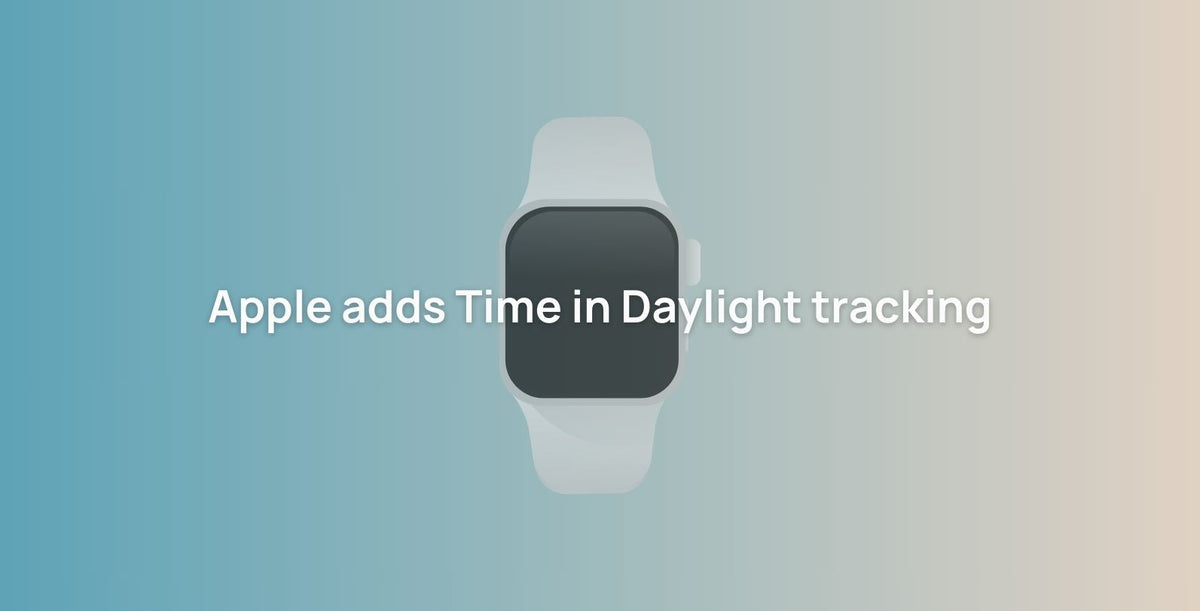
Here’s why your Apple Watch now tracks your time in daylight
|
|
Time to read 2 min
What gets measured gets managed.
That seems to be Apple’s thinking behind their recent decision to add Time in Daylight feature to the Apple Watch
Apple’s Time in Daylight feature uses the watch’s ambient light sensor, GPS, and motion sensors to detect whether a person is outside. The feature is available on Apple Watch 6 and SE 2 or later.
It reflects a growing awareness of sunlight’s importance for health. Last week, the largest study of its kind, with 85,000 participants, showed that increased daylight improved mental health. Apple says daylight is important for eye development during childhood and can benefit everyone’s physical and mental health.
Apple’s certainly not the first tech company to acknowledge daylight’s benefits. At Osin, we’ve been banging on about natural light for years. Meanwhile, a little-known Danish company called LYS Technologies developed a wearable light sensor that does essentially the same thing as what the Apple Watch will now do. But with over 100 million Apple Watch users globally, Apple’s decision to add daylight tracking will help people see light in a new way.

Is this necessary?
You might be wondering whether you really need your watch to tell you if you spend enough time in daylight.
Today, the average person spends 90% of their day indoors, which is dramatically less than just a few generations ago. Although it seems normal today, the idea of spending most of the day indoors, punctuated by a few brief moments outside, is highly unnatural.
Getting outside can have many psychological benefits. But it’s also important for setting the timing of your circadian rhythm. The current scientific consensus is that we need at least 250 daylight illuminance (m-EDI) for optimum health. That’s about double what we get from the artificial lighting in a standard office.
I’m indoors at least eight hours a day, and if you work a 5 – 9, I’m willing to bet you’re on a comparable level. So unless you’ve got one of the fancy desks right next the window, getting enough daylight is a constant struggle. That’s where Osin comes in. We’re a light technology company bringing the benefits of daylight indoors with cutting-edge tech.
How does light improve health?
When you think of sunlight, you might think of sunburn and premature ageing. But the benefits of daylight are well documented:
• Improve alertness and cognitive performance (see studies 🔎: 1, 2)
• Improve mood (see study 🔎: 3)
• Alleviate sub-clinical seasonal affective disorder (see study 🔎: 4)
• Promote melatonin production (see studies 🔎: 5, 6)
• Help you fall asleep faster (see study 🔎: 7)
• Enhance sleep quality (see studies 🔎: 8, 9, 10)
• Help you stay asleep longer (see studies 🔎: 11, 12)
Additionally, an aligned circadian rhythm helps ensure you live a long and healthy life by:
• Reducing the risk of heart disease (see studies 🔎: 13, 14)
• Reducing the risk of cancer (see studies 🔎: 15, 16)
• Reduce the risk of obesity (see studies 🔎: 17, 18)
• Reduce the risk of diabetes (see studies 🔎: 19, 20)
• Reduce risk of neurodegenerative diseases (see studies 🔎: 21, 22)
• Reduce the risk of depression and other mental health conditions (see study 🔎: 23)




